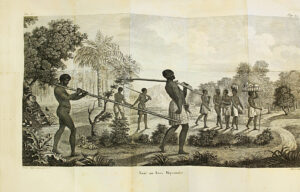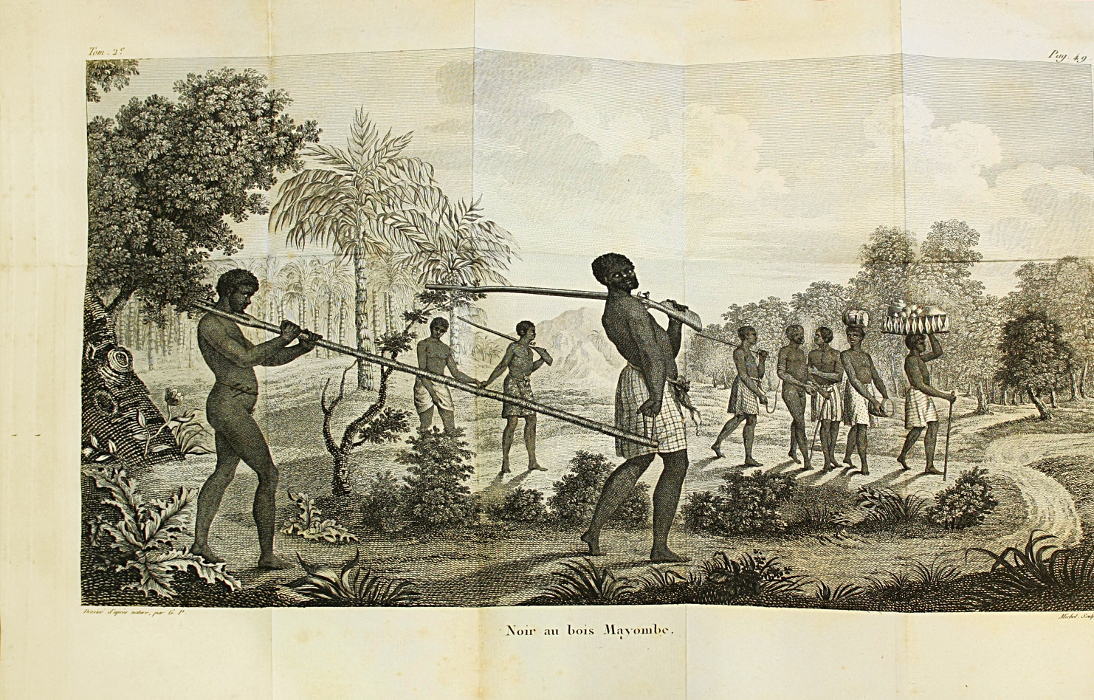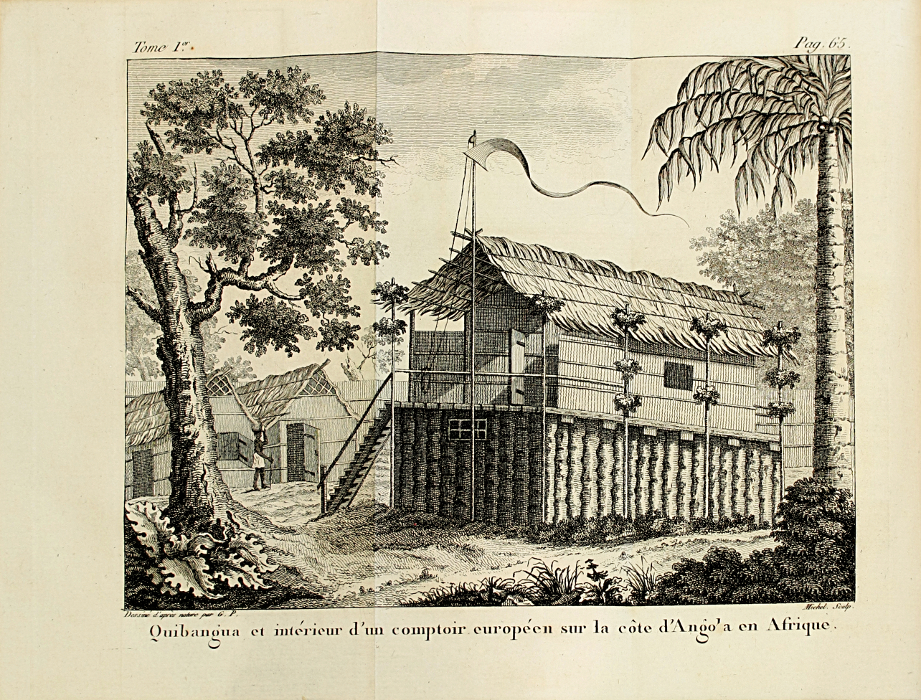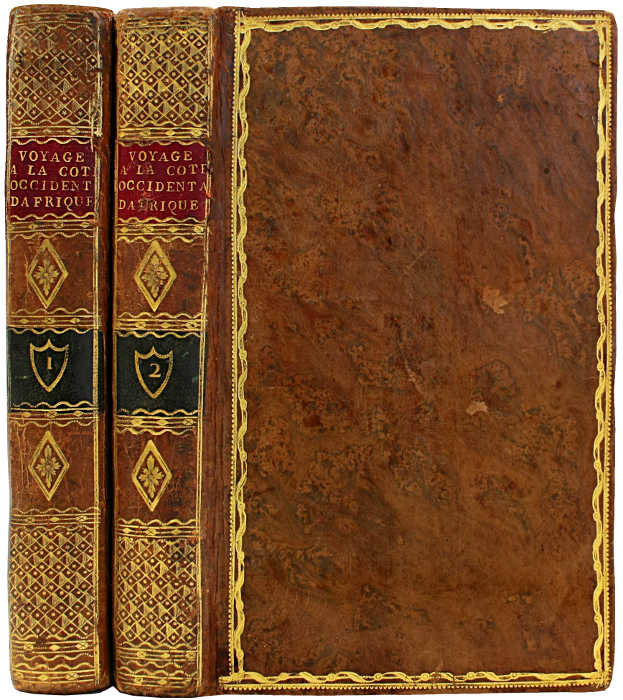Paris, Dentu, 1801.
2 parts in 2 8vo volumes [191 x 120 mm] of : I/ (2) ll., 32 pp., xxviii, 226, 1 map and 7 folding plates; II/ (2) ll., 320 pp., 1 plan, 1 map and 1 folding plate. Bound in full tree calf, gilt borders on the covers, flat spines richly decorated, red and green morocco lettering pieces, mottled edges. Contemporary binding.
Sought-after first edition of this account of the captain Louis Ohier de Grandpré’s experience as a slave trader on the west coast of Africa in the years 1786-1787. Chadenat 6253; Gay 3014.
At the end of the 18th century, many European slave traders were practicing the slave trade on the « coast of Angola » which refers at that time not only to the actual Angola, in the South of the Zaire River, but also in the North, to the Congo’s Kingdoms: Loango, Kacongo and Ngoyo or Gabinda especially productive. The captives, called ‘Congos’ by the Europeans, come from the periphery of those kingdoms, on an area of approximately 300 km and also arrive, by the river, from more distant regions of the center or south of Africa. The archives of this traffic support travel accounts, sometimes illustrated. Slave trader captain on the « coast of Angola » in 1786-1787, Louis Ohier de Grandpré publishes, in 1801, when the slave trade recovers in France, his slave trader experience. Louis Ohier, count de Grandpré (1761-1846) is a French sailor and traveler.
“Grandpré, who has participated in the slave trade on the west coast of Africa, points out here its abuses, and proposes to abolish it and to replace it by many firms where we would have imported and grown all the colonial productions. Then he tries to exonerate the natives of the cannibalism accusation, which he says was practiced by them only very rarely, and only as a vengeance. This account contains interesting details about the manners, the trade and navigation of the people indicated by the author.” (Nouvelle Biographie générale, 21, 659)
The present work is abundantly illustrated with maps of the Coast of Angola and of the Cape of Good Hope, the plan of the Cape of Good Hope citadel and with 8 folding plates.
The illustration comprises « 8 beautiful folded plates representing the natives and manners scenes » (Chadenat). Chadenat announces 12 engravings but all the copies that we studied count 11 plates, like the present copy. Besides, the first part comprises a very interesting Congo vocabulary from page 156 to 162.
A beautiful copy of this account of an expedition to Africa at the end of the 18th century, preserved in its contemporary tree calf binding with flat spines finely decorated.
Provenance: ex libris from Raymond Lacave Laplagne Barris (1786-1857), who led an exemplary lawyer life, climbing, despite the political jolts, the steps that led him to be the President of the final Court of Appeal and Peer of France. During his long and rich career he would relax from the juridical works by reading philosophy and travel books. His books bear his ex-libris with a cap and a cape of highest judge.




